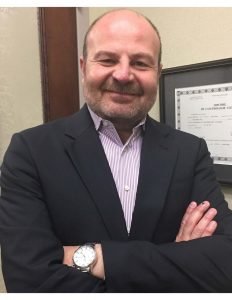Hematologist-Oncologist to Lead Innovative NYU Bone Marrow Transplant Initiative

Syrian-born hematologist-oncologist Ahmad Samer Al-Homsi, MD, MBA, will lead an innovative program at NYU Langone’s Perlmutter Cancer Center for treating blood cancers, including multiple myeloma, leukemia and lymphoma.
In collaboration with Johns Hopkins, Al-Homsi will set up an haploidentical transplant program at Perlmutter, in which partially matched people can serve as donors. The program aims to broadly expand the potential donor pool for patients needing transplants.
Throughout his career, Al-Homsi has focused on understanding graft-versus-host disease (GvHD), a life-threatening condition in which a donor’s immune cells attack a recipient’s healthy tissues. He has led trials examining innovative combinations of drugs to prevent GvHD, including proteasome inhibitors and cyclophosphamide that abolish the need for prophylactic treatment. This opens up new possibilities for patients with limited kidney function who would otherwise be ineligible for blood and marrow transplants.
Al-Homsi will also coordinate a team to help patients requiring bone marrow transplants at Rita J. and Stanley H. Bone Stem Cell/Bone Marrow Transplant Center.
Al-Homsi earned his medical degree from Syria’s University of Damascus. He studied hematology at the University of Tours in Paris, and clinical oncology at the University of Paris VI. Al-Homsi completed his U.S. training at Chicago’s Christ Hospital and Medical Center and did a fellowship at the University of Massachusetts.
“I am delighted to join NYU Langone and its Perlmutter Cancer Center to build a nationally recognized bone marrow transplantation program,” Al-Homsi said in a press release. “We are defeating leukemia, lymphoma and myeloma at increasing rates. At the same time, we must continue to discover ways to ameliorate problems that sometimes come with treatment. I am confident we can make important strides.”
Regular allogeneic hemopoietic stem cell (HPC) transplants involve matching a patient’s tissue type with that of a related or unrelated donor. The closer the match between donor and recipient, the greater the chance a transplant will succeed. But when the match is insufficient, the donor’s immune system might attack the recipient’s tissues, leading to GvHD.
Researchers are now working to use partially matched or haploidentical related donors, usually a patient’s parent, sibling or child with 50 percent match.
According to the Leukemia Foundation, haploidentical transplants might be a game-changer for those needing stem cell or bone marrow transplants, as it boosts the chance of finding a donor.







